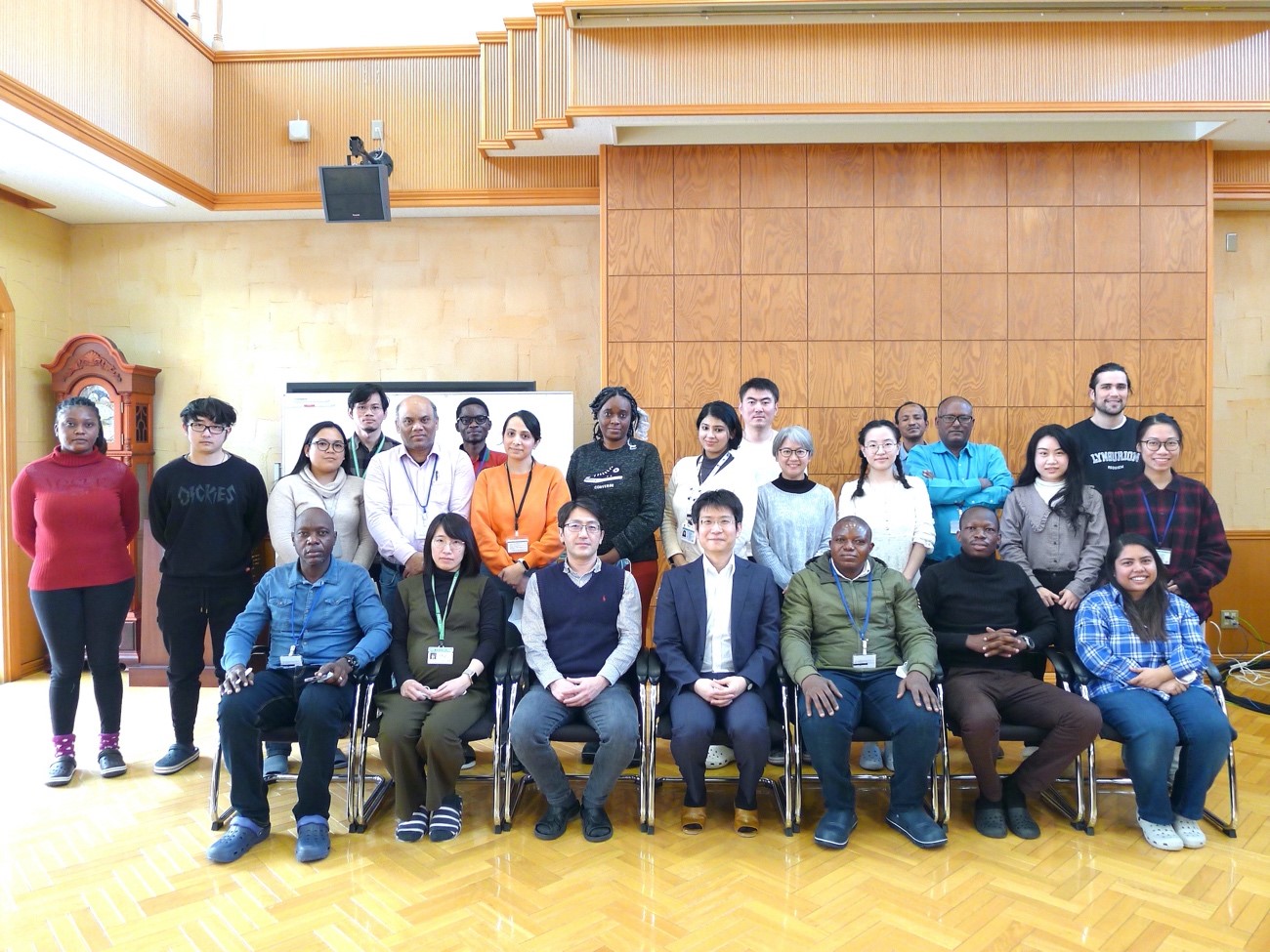We held a special lecture by Assistant Professor Tatsuki SUGI (Hokkaido University, International Institute for Zoonosis Control) titled “How does Toxoplasma gondii establish chronic infection?” on March 3 (Fri) at PK hall.
Toxoplasma gondii can infect a wide range of warm-blooded animals, including humans. The infection causes severe outcomes in immunocompromised patients, if untreated. Switching the two infectious stages in the intermediate host animals, i.e. fast replicating tachyzoite in acute phase infection and slow replicating bradyzoite in chronic phase infection is one of the characteristics of this parasite. Chronic infection in muscle tissues in meat production host can be an infectious source, and chronic infection in the central nervous systems in humans can be a source of recurrent infection in immunocompromised patients. Currently, no effective drug for eradicating chronic infection of this parasite is available, and understanding the mechanisms of this parasite to establish chronic infections is required for the development of countermeasures.
In this seminar, I would introduce our attempts to understand how the parasite develops its niche to establish chronic infections. To start with the investigation, we focused on the parasite structure that is only developed in the chronic stage, the cyst wall which is underneath of parasitophorous vacuole membrane between the parasite and host. By simple subcellular structure co-immunoprecipitation with structural protein CST1 followed by proteomics analysis, cyst wall protein candidates were identified including the novel uncharacterized proteins. Knock-out of some of those candidates resulted in reduced cyst formation in the chronic infection. Identified cyst wall candidates included known parasite effector proteins, suggesting that even in the chronic infection stage, the parasite emits those effectors to modulate host cell functions. By utilizing the single-cell level transcriptome analysis, we identified that host immune pathways, including IFNs and NF-κB signaling, were suppressed in the bradyzoite infection whereas those were activated in the tachyzoite infection. The biological function of this chronic infection-dependent host cell immune suppression should be clarified in the future in the in vivo infection context, i.e. whether the suppression of these immune pathways is beneficial for establishing a chronic infection or not.
Also, I would introduce our attempts for the screening of an effective compound for this unattackable(?) parasite stage.
(Reported by Yoshifumi Nishikawa)

